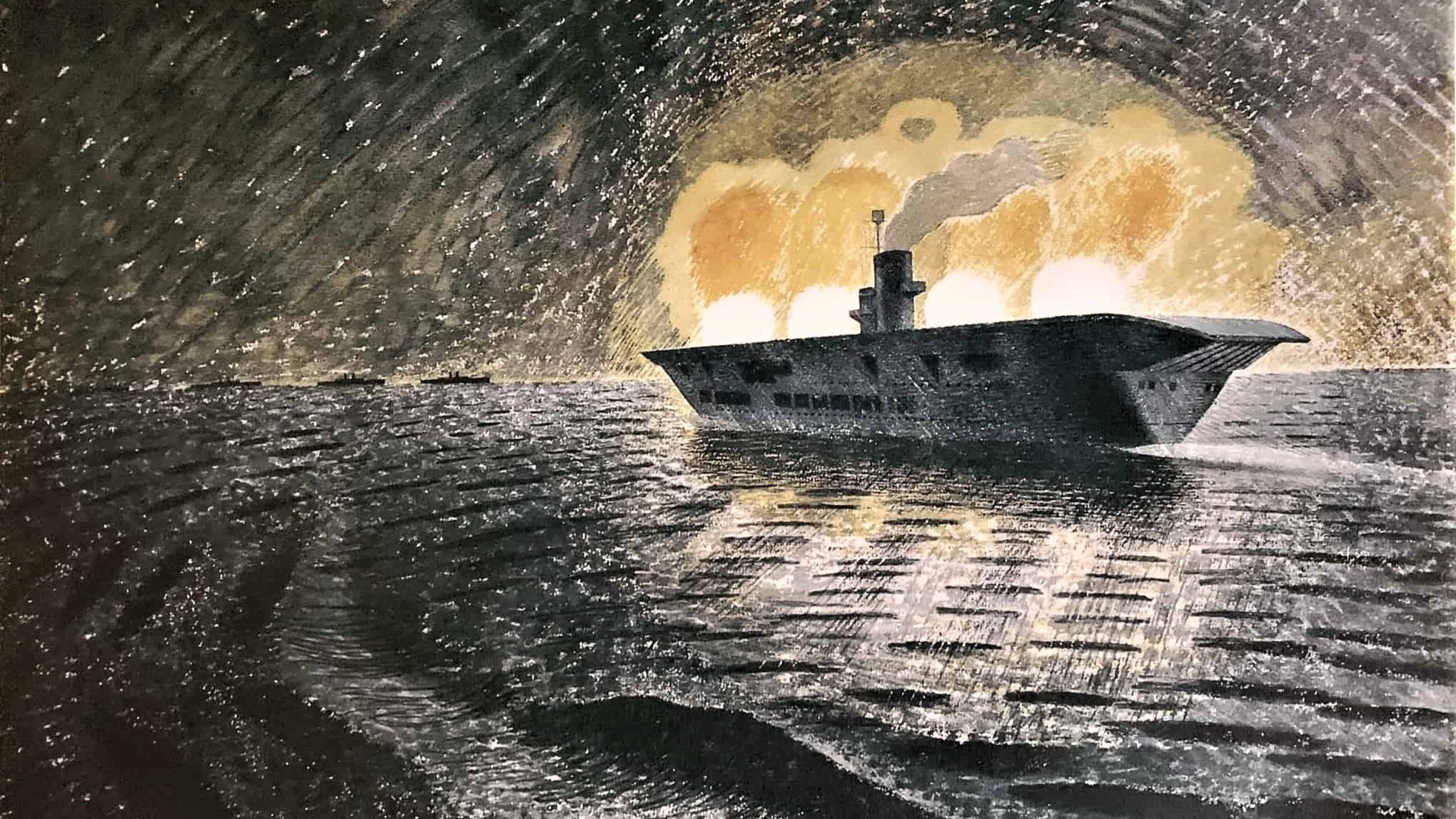Eric Ravilious - Drawn to War
Margy Kinmonth's new documentary explores the life and career of a distinguished British painter and illustrator once almost forgotten.
Eric Ravilious (1903–1942) was a British artist who became well-established during his lifetime but whose work tended to be overlooked for forty years or more after his early death. More recently his wide-ranging contribution - a range that included watercolour paintings, lithographs, ceramics, illustrations and wood engravings - has been reassessed giving him real standing today. Even so, there will be those who have yet to discover Ravilious and for them this documentary feature on his art and life made by Margy Kinmonth will make a valuable introduction.
For the most part this film follows a standard pattern for works of this kind. Although it starts with the artist’s death in Iceland when travelling as a passenger in a plane that crashed, thereafter his life is followed in chronological order. Tirzah Garwood who became his wife (she was an artist in her own right and they married in 1930) died of cancer only nine years after his death, but there are surviving family members - Anne Ullman their daughter, Ella Ravilious a granddaughter - who contribute to the film as do a number of curators, a close friend (the artist David Hepher) and a number of present-day admirers. The latter include Grayson Perry, Ai Weiwei, Robert Macfarlane, Julian Mitchell and Alan Bennett. Indeed, it is Bennett, an early admirer of the artist, who describes Ravilious as having been a shared secret among those who loved his work before it was widely rediscovered.
The most novel aspect of Eric Ravilious - Drawn to War is the extent to which it features the words of the artist and his wife. Presumably taken verbatim from letters and diaries, they are spoken by Freddie Fox and Tamsin Greig and they handle it admirably - you could describe this as perfect casting. In the 1930s Ravilious had at least two affairs that are noted here, but the marriage lasted and the bond was patently a close one. Enough detail is supplied for this to be apparent but the art is the film’s crucial element, its quality well brought out on the big screen as photographed by Rob Goldie and Richard Ranker. We hear Ravilious state that he was drawn to war as a subject and that was despite (or even because) of his detestation of its horrors. It was his work done as an official war artist for which he was most acclaimed but his early love of the South Downs (he went to school in Eastbourne) played a major role in his landscapes and this film makes it evident that ahead of the war years he had already found his individual path. It is Macfarlane who describes some of this work as being notable for its unique character, at once serene and disturbing. It is as though Ravilious had an instinctive awareness of the hovering threat that would become manifest when war broke out.
Margy Kinmonth has done a good job here although personally I could do without dramatised moments so obviously set up for the camera (we see detailed reconstructions of the crashing plane not once but twice and are invited to believe that a boy seen on screen is the young Ravilious). But my reaction here and also to the odd touch of animation applied may be a matter of personal taste. Undoubtedly this is an able work which serves a valuable purpose in increasing public awareness of the significant talent of Eric Ravilious.
MANSEL STIMPSON
Featuring Anne Ullman, Ella Ravilious, Alan Bennett, Grayson Perry, Robert Macfarlane, James Russell, Charles Saumarez Smith, Ai Weiwei, Alan Powers, David Hepher, Julian Mitchell, Paris Agar, Robert Rumble, Mark Miller, Anne Desmet, and the voices of Freddie Fox and Tamsin Greig.
Dir Margy Kinmonth, Pro Margy Kinmonth, Screenplay Margy Kinmonth, Ph Rob Goldie and Richard Ranken, Ed Gordon Mason, Music Edmund Jolliffe.
Foxtrot Partners-Dartmouth Films.
88 mins. UK. 2022. UK Rel: 1 July 2022. Cert. PG.


